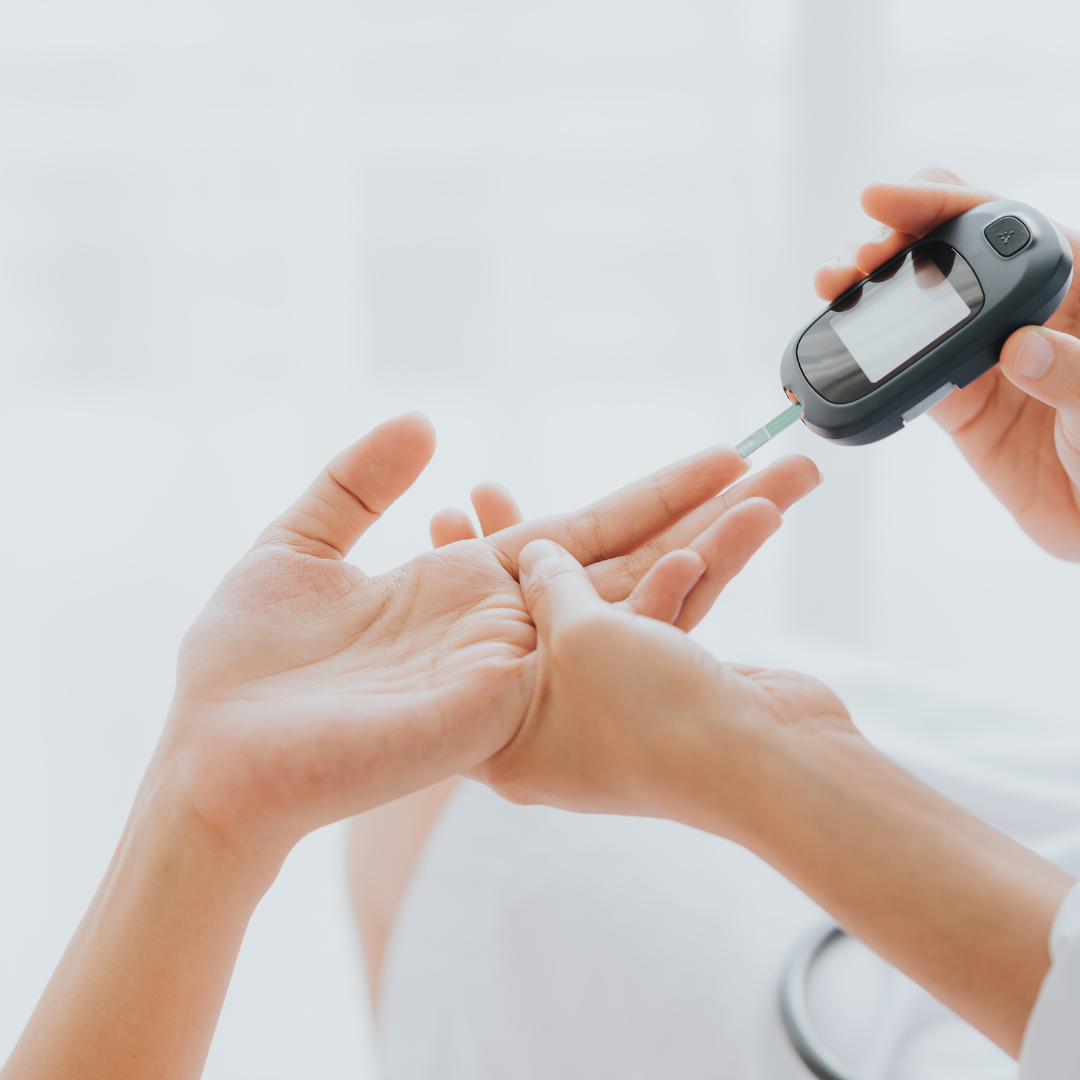Diabetes prevention program
Lifestyle Medicine Options, Diabetes Prevention Program (LMO DPP) has been awarded by CDC with Pending Recognition – according to the criteria contained in the CDC DPRP Standards and Operating Procedures. In case you are interested in participating in the LMO DPP please check the information here below.
To register for the program call 503-442-0226. For questions about the program, email to info@lifestylemedicineoptions.com .
PROGRAM INFORMATION
You will get a full year of support and learn how to eat healthy, add physical activity to your routine, manage stress, stay motivated, and solve problems that can get in the way of your goals. This program is proven to prevent or delay type 2 diabetes. Participants who lost 5-7% of their body weight and added 150 minutes of exercise per week cut their risk of developing type 2 diabetes by up to 58% (71% for people over 60 years old).

Over eighty-four million Americans now have prediabetes – that is 1 out of 3 adults! Of those 84 million, 9 out of 10 of them don’t even know they have it. Without taking action, many people with prediabetes could develop type 2 diabetes within 5 years.
What are Prediabetes and Diabetes? Having prediabetes means your blood glucose (sugar) levels are higher than normal—but not high enough to be diagnosed as diabetes. Prediabetes can lead to heart disease, stroke, and type 2 diabetes, the most common form of diabetes. Prediabetes can often be reversed.
With type 2 diabetes, your body cannot properly use insulin (a hormone that helps glucose get into the cells of the body). You can get type 2 diabetes at any age, but you are at higher risk if you are older, overweight, have a family history of diabetes, are not physically active, or are a woman who had gestational diabetes.
Gestational diabetes is a kind of diabetes that some women get when they are pregnant. Even if a woman’s blood sugar levels go down after her baby is born, she is at higher risk of getting type 2 diabetes later in life. With type 1 diabetes, your body cannot make insulin, so you need to take insulin every day. Type 1 diabetes is less common than type 2 diabetes; about 5% of the people who have diabetes have type 1. Currently, no one knows how to prevent type 1 diabetes.
If you want to learn more about the basics of diabetes and prediabetes, you can visit CDC’s Diabetes website: https://www.cdc.gov/diabetes/index.html?CDC_AA_refVal=https%3A%2F%2Fwww.cdc.gov%2Fdiabetes%2Fhome%2Findex.html

Program Focus
The Lifestyle Medicine Options Diabetes Prevention Program is a yearlong program designed for people with pre-diabetes. It is also designed for people who are at high risk for type 2 diabetes and want to lower their risk.
Program Goals
Lifestyle Medicine Options Diabetes Prevention Program helps participants achieve moderate weight loss by eating well and being active.
By the end of the first six months, the goal is for participants to:
- Lose at least 5 to 7 percent of their starting weigh
- Get at least 150 minutes of physical activity each week, at a moderate pace or more
- By the end of the second six months, the goal is for participants to:
- Keep off the weight they have lost
- Keep working toward their goal weight, if they have not reach it
- Lose more weight if they wish
- Keep getting at least 150 minutes of activity each week


Program Structure
Once a week for four months (sessions 1 to 16)
Every other week for two months (sessions 17 to 20)
Once a month for six months (sessions 21 to 26)
Program Eligibility
1. Participants must be 18 years of age or older. Studies of type 2 Diabetes Prevention lifestyle programs have not included children; these programs are intended for adults at high risk for developing type 2 diabetes.
2. Participants must have a body mass index (BMI) of ≥25kg/m2 (≥23kg/m2 if Asian American).
3. Participants must be considered eligible based on either:
• A recent (within the past year) blood test (may be self-reported) or claim code indicating they have prediabetes, or a history of gestational diabetes mellitus (GDM), according to one of the following specifications.
– Fasting glucose level of 100 to 125 mg/dl.
– Plasma glucose level measured 2 hours after a 75 gm glucose load of 140 to 199 mg /dl.
– An A1C level of 5.7 to 6.4.
• Clinically diagnosed Gestational Diabetes Mellitus (GDM) during a previous pregnancy (may be self-reported).
4. A positive screening for prediabetes based on the CDC Prediabetes Screening Test (available in the Guidance section of this document or accessible online (click here) or a screening result indicating high risk for type 2 diabetes on the hard copy or electronic version of the American Diabetes Association Type 2 Diabetes Risk Test.
5. Participants cannot have a previous diagnosis of type 1 or type 2 diabetes prior to enrollment.


A Note for All Participants
Participants who develop type 2 diabetes while in the program should be referred to their primary care provider for referrals to ADA-recognized or AADE-accredited diabetes self-management education and support (DSMES) programs and other resources such as Medical Nutrition Therapy (MNT) as appropriate.
Lifestyle change programs for type 2 diabetes prevention emphasize weight loss and are not appropriate for women who are currently pregnant. Participants who become pregnant may continue at the discretion of their health care provider and the CDC-recognized program delivery organization.
Please note:
We do not provide primary care. You are encouraged to have a Primary Care Provider (PCP) for routine care (such as annual physicals) as well as for acute illness/injury. In addition, please keep your PCP informed of any changes to your lifestyle habits, health status, or medication regimen.
Program schedule
Tuesdays, 5:30 – 7 p.m.
Session + Topic
- 1 -- Introduction to the Program
- 2 -- Get Active to Prevent T2
- 3 -- Track Your Activity
- 4 -- Eat Well to Prevent T2
- 5 -- Track Your Food
- 6 -- Get More Active
- 7 -- Burn More Calories Than You Take In
- 8 -- Shop and Cook to Prevent T2
- 9 -- Manage Stress
- 10 -- Find Time for Fitness
- 11 -- Cope with Triggers
- 12 -- Keep Your Heart Healthy
- 13 -- Take Charge of Your Thoughts
- 14 -- Get Support
- 15 -- Eat Well Away from Home
- 16 -- Stay Motivated to Prevent T2
- 17 --When Weight Loss Stalls
- 18 -- More About Carbs/Take a Fitness Break
- 19 -- Have Healthy Foods You Enjoy
- 20 -- Get Enough Sleep
- 21 -- Get Back on Track
- 22 -- Stay Active to Prevent T2
- 23 -- Stay Active Away from Home
- 24 -- Prevent T2 for Life!
Sessions are held at the address below:
Lifestyle Medicine Options
9498 SW Barbur Blvd. Ste 210, Portland OR 97219
More information on the program is available at: http://www.cdc.gov/diabetes/prevention/index.htm

Get started
Join us and let us help you improve your health.
Get started
Join us and let us help you improve your health.
Select the program that works the best for you.
